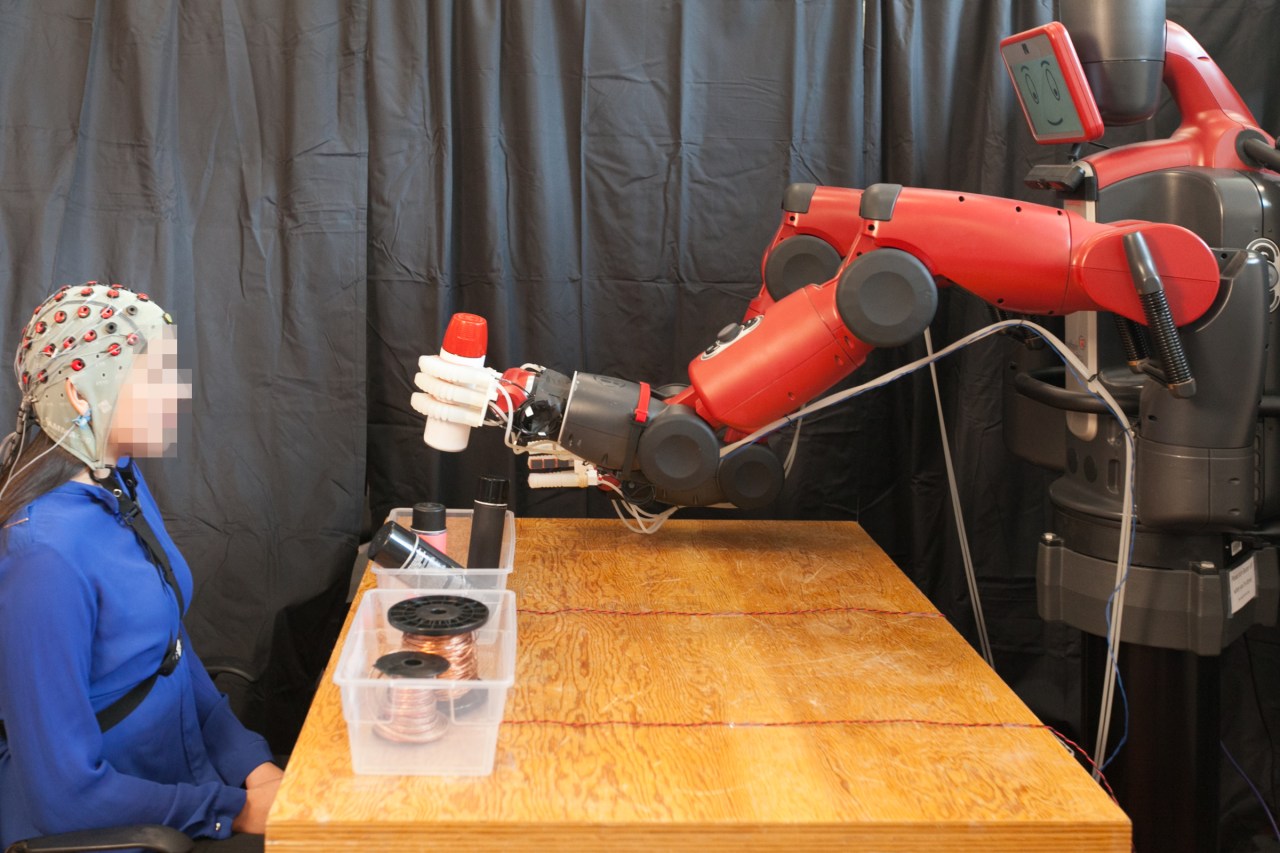In the ever-evolving landscape of robotics and artificial intelligence, a groundbreaking approach developed by researchers at MIT’s CSAIL is set to redefine the symbiotic relationship between humans and machines. This innovative technology enables robots to self-correct in real-time based on human feedback, propelling us closer to a future where machines intuitively respond to our cues and errors. Let’s delve deeper into this fascinating advancement that merges cognitive signals with robotics.
The Concept Behind Self-Correction
Imagine a robot working diligently on an assembly line, picking up items and categorizing them. However, during its process, it mistakenly places a paint can in the wrong bin. Traditionally, this would require someone to intervene, possibly through programming or manual control. But what if the robot could recognize its error without extensive reprogramming? This is precisely what the team at CSAIL has accomplished.
- Error Potential: The key lies in understanding the concept of “error potential.” This signal emerges remarkably when humans notice something amiss, allowing the robot to detect the mistake.
- EEG Technology: By utilizing EEG caps worn by a supervisor, the robot harnesses brain signals emitted from the observer’s reaction to the error. Specifically, it captures that strong signal indicating a mistake, and in milliseconds, initiates a correction.
As CSAIL Director Daniela Rus explains, this signifies a pivotal shift from the traditional programming model, where humans adapt to machines, to a more intuitive interaction, where robots learn from human feedback.
The Mechanics of Adaptive Learning
In the current stages of this project, the robot interaction operates with a binary distinction—it can differentiate between two selections, like paint and wire. It accomplishes this with a remarkable response time, taking only 10 to 30 milliseconds to react to the observed error.
- Real-time Adaptations: As part of its learning process, the robot could eventually evolve its systems to categorize mistakes more meaningfully, adjusting its actions based on accumulated experiences.
- Future Prospects: Researchers envision applications beyond simple corrections. For example, this technology could aid individuals with communication barriers, empowering them to guide machines without verbal cues or manual adjustments.
Applications Beyond the Assembly Line
This innovative technique has potential use cases that extend beyond traditional manufacturing settings. CSAIL PhD candidate Joseph DelPreto imagines scenarios where such technology could be implemented in autonomous vehicles, allowing them to not only execute tasks but also acknowledge when corrections from a human operator are necessary. This two-way dialogue creates a more nuanced interaction and may enhance safety for passengers.
Why This Matters
The implications of this technology go beyond robotics; they represent a fundamental evolution in human-machine interaction. By creating a scenario wherein machines can understand human signals and adapt accordingly, we usher in new possibilities for collaboration. Be it in homes, workplaces, or transportation, this advancement carries the potential to enhance the operational landscape significantly.
Conclusion: A Future Built on Collaboration
As we pave the way for more intuitive robotics through error potential detection, the dream of a collaborative future between humans and machines inches closer to reality. With ongoing research and development in this area, we can anticipate a world where our devices are not just tools, but partners in productivity and safety.
At fxis.ai, we believe that such advancements are crucial for the future of AI, as they enable more comprehensive and effective solutions. Our team is continually exploring new methodologies to push the envelope in artificial intelligence, ensuring that our clients benefit from the latest technological innovations.
For more insights, updates, or to collaborate on AI development projects, stay connected with fxis.ai.

